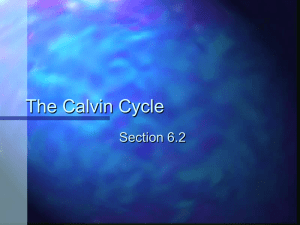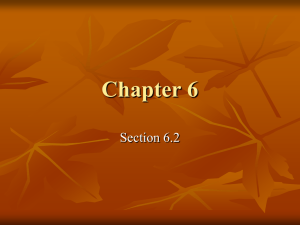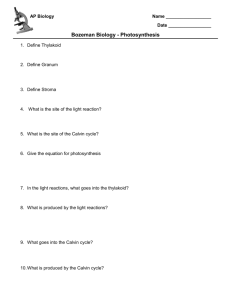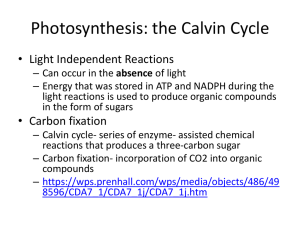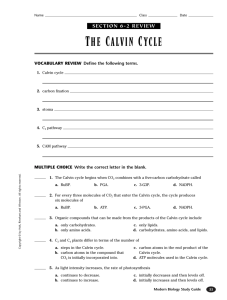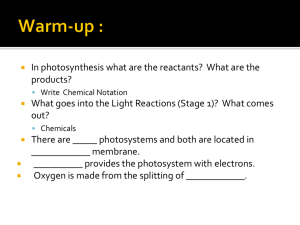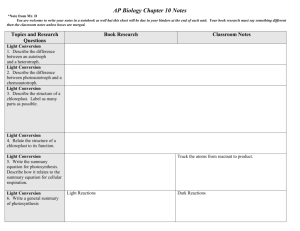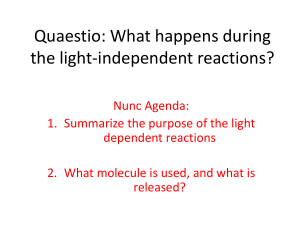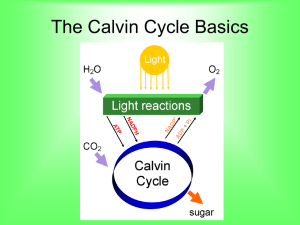Photosynthesis part deux: The Calvin Cycle
advertisement
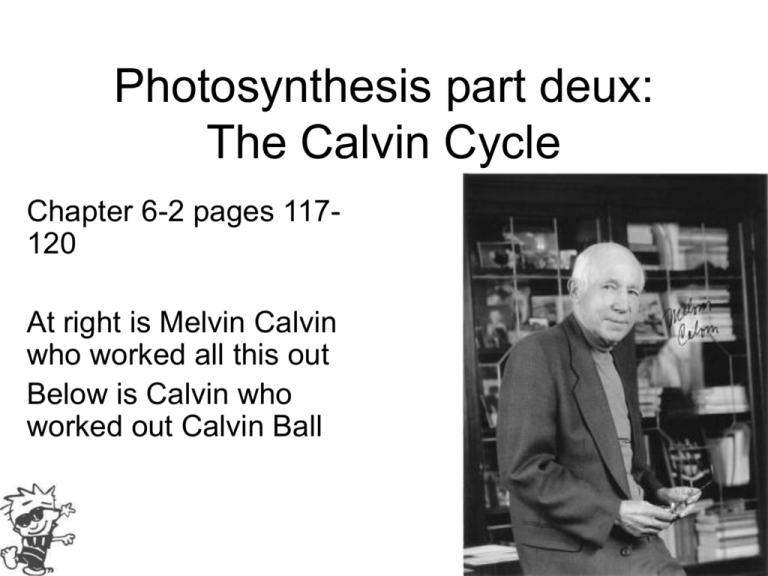
Photosynthesis part deux: The Calvin Cycle Chapter 6-2 pages 117120 At right is Melvin Calvin who worked all this out Below is Calvin who worked out Calvin Ball Calvin Cycle • From photosynthesis we get ATP and NADPH • Now we’ll use the energy from that to make biomolecules • The energy from Niagra falls is used to power turbines so we can use electricity to do work Carbon Fixation • Carbon fixation is the building of biomolecules from CO2 • 3 steps of the Calvin Cycle 1. CO2 diffuses into the stroma from the surrounding cytoplasm. RuBP is combined with CO2. The new 6 Carbon molecule splits into 2 3 Carbon molecules called PGA Calvin Cycle Step 2 2 PGAs converted to another 3 Carbon molecule PGAL, in a two part process 1. PGA receives a Phosphate from ATP 2. NADPH gives its H+ The ADP, NADP+, and Phosphate are reused back in the photosynthesis reaction • Confused, stare at this picture, watch the lines seem to move. Now get back to work Calvin Cycle Step 3 Some of the PGAL goes back to RuBP so the Cycle can continue Other PGAL goes elsewhere to make Biomolecules Balance sheet for Photosynthesis • Calvin Cycle has to turn 3 times to get a PGAL – That uses 9 ATPs and 6 NADPHs • Now no glucose has been made yet. Cellular respiration is where Glucose is involved. The Lakers appreciate the Calvin Cycle, you should to. Alternative pathways • C3 Plants only fix carbon through the Calvin Cycle – Most plants are this, trees for example • In hot climates plants lose water through open stomata so they need to keep stomata closed • But stomata are where CO2 & O2 leave and enter the cell Alternative Pathways • C4 pathway plants put CO2 into 4 carbon molecules – Corn & Sugar Cane are examples • CAM pathway plants have stomata open at night and closed during the day, the opposite as normal – includes Cactus & Pineapple
